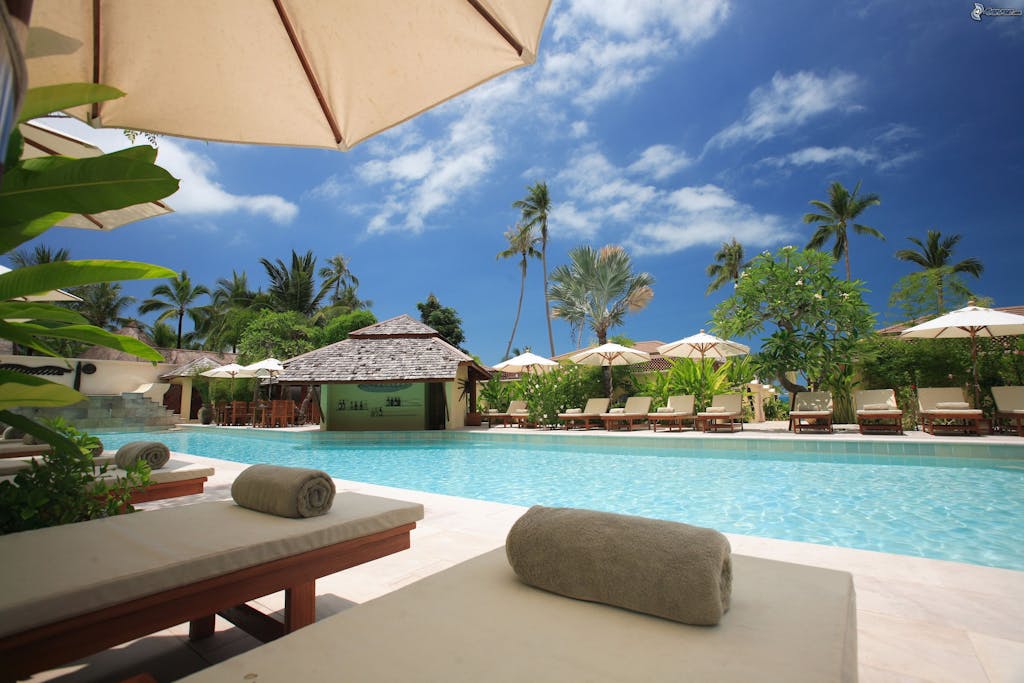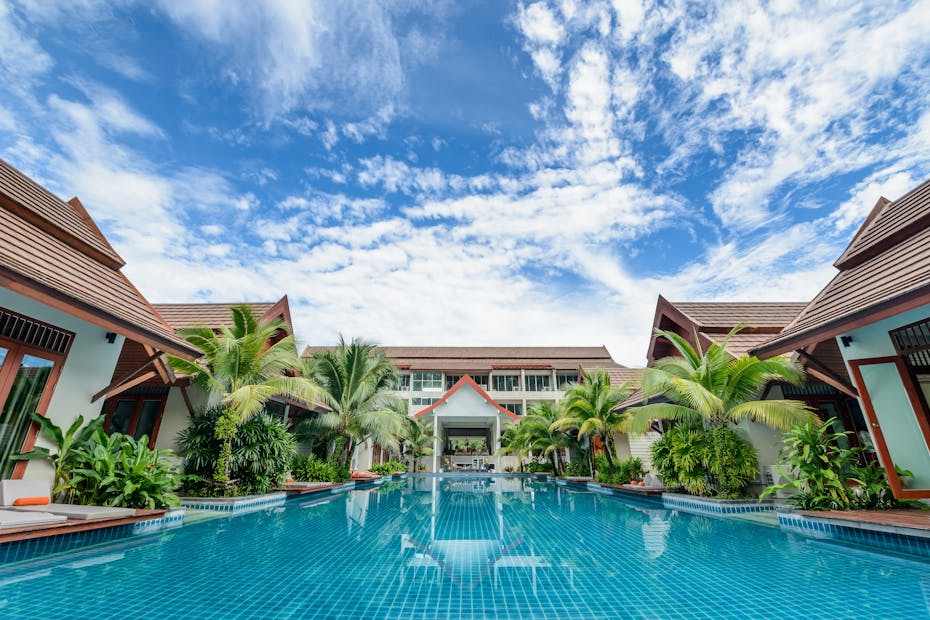The world of hospitality design is constantly evolving. As technology advances, sustainability becomes a priority, and guests’ expectations change, architects and designers are forced to adapt and innovate. Hotels and resorts, which have traditionally been symbols of luxury and comfort, are now at the forefront of cutting-edge design, pushing boundaries to create unforgettable experiences. This article explores the architectural trends that are defining the future of hotels and resorts.
The Rise of Biophilic Design in Hospitality Architecture
One of the most prominent trends in hospitality design is biophilic design, which aims to connect people with nature by incorporating natural elements into the built environment. Biophilic design is not just about aesthetics; it’s also rooted in the idea that nature has a profound effect on our well-being, reducing stress and improving overall health.
Greenery and Natural Elements
Hotels and resorts are increasingly integrating greenery into their interiors and exteriors. From vertical gardens and living walls to rooftop gardens, plants are playing a key role in creating a serene atmosphere. Natural materials such as wood, stone, and bamboo are being used to create a warm, inviting ambiance. Open courtyards and outdoor spaces are also becoming a focal point, allowing guests to enjoy nature without leaving the premises.
Natural Lighting and Ventilation
Another aspect of biophilic design is the use of natural light. Large windows, skylights, and glass facades are becoming standard features in hospitality design, allowing for more daylight to enter the building. This not only reduces energy consumption but also enhances the overall guest experience. Additionally, passive ventilation systems that rely on natural airflow are being integrated into many resorts, creating a comfortable and eco-friendly environment.
Sustainability in Hotel and Resort Design
Sustainability is no longer just a buzzword in the hospitality industry; it is a driving force behind architectural design. Hotels and resorts are increasingly focusing on energy-efficient building practices, eco-friendly materials, and waste reduction to create more sustainable environments. Guests, especially those from younger generations, are placing greater importance on environmental responsibility when choosing accommodations.
Energy-Efficient Buildings
Energy-efficient design is a critical aspect of sustainable hospitality architecture. Hotels and resorts are investing in energy-saving technologies such as solar panels, geothermal heating, and LED lighting to reduce their carbon footprint. Smart building systems that monitor and adjust energy usage in real-time are also becoming more common, ensuring that energy consumption is kept to a minimum.
Eco-Friendly Materials
Sustainable materials are being used more frequently in hospitality design. Recycled materials, reclaimed wood, and locally sourced products are gaining popularity for their minimal environmental impact. Additionally, designers are prioritizing low-impact finishes, such as natural paints and non-toxic coatings, to promote healthier indoor environments for guests.
Waste Reduction and Water Conservation
Hotels and resorts are taking steps to reduce waste and conserve water. Implementing water-saving devices like low-flow faucets and toilets, as well as recycling and composting programs, are becoming standard practices in many establishments. Some resorts are even adopting zero-waste policies, aiming to send nothing to landfills.
The Integration of Smart Technology
The integration of smart technology into hotel and resort design is transforming the guest experience. From in-room automation to advanced security systems, technology is enhancing both convenience and comfort for guests while also improving operational efficiency for hotel staff.
Smart Rooms
Smart rooms are becoming a staple in modern hospitality design. Guests can control lighting, temperature, and entertainment systems from their smartphones or in-room tablets. Voice-controlled assistants like Amazon Alexa and Google Assistant are also being integrated into rooms, allowing guests to adjust their environment with simple voice commands. Some hotels even offer personalized experiences, such as pre-set room temperatures and lighting preferences based on guest profiles.
Enhanced Connectivity
High-speed internet access and reliable Wi-Fi are non-negotiable in today’s hospitality industry. Hotels and resorts are investing in cutting-edge connectivity infrastructure to ensure seamless communication and internet access for their guests. Additionally, some resorts are offering virtual concierge services, allowing guests to request amenities, book excursions, or get information about the property through apps or online platforms.
Contactless Technology
The rise of contactless technology is another trend accelerated by the COVID-19 pandemic. Hotels are embracing contactless check-in and check-out systems, mobile room keys, and digital menus to reduce physical contact and enhance guest safety. These innovations provide a smoother, more efficient experience while maintaining high levels of hygiene.

Wellness-Focused Architecture
With wellness travel on the rise, many hotels and resorts are incorporating health and well-being into their design. Wellness-focused architecture is about creating spaces that promote physical and mental health through thoughtful design and amenities.
Spa and Fitness Facilities
Spas and fitness centers are no longer afterthoughts in hotel design; they are now central to the guest experience. Many luxury hotels and resorts are offering state-of-the-art wellness facilities, including yoga studios, meditation rooms, and thermal suites. These spaces are designed to promote relaxation and rejuvenation, making guests feel more connected to their health during their stay.
Sleep-Focused Design
Another growing trend is the emphasis on sleep quality. Hotels are incorporating sleep-friendly designs, such as soundproofing, blackout curtains, and high-quality bedding, to ensure guests get a good night’s rest. Some resorts even offer sleep consultants or sleep-enhancing amenities like aromatherapy diffusers and guided relaxation sessions.
Outdoor Spaces for Wellness
Designers are also focusing on outdoor wellness spaces, such as meditation gardens, walking trails, and private terraces. These areas encourage guests to reconnect with nature, meditate, or simply enjoy fresh air in a tranquil setting.
The Future of Luxury in Hospitality Design
Luxury in hospitality design is evolving beyond traditional opulence. Modern luxury is about offering unique, personalized experiences that cater to the individual needs and preferences of guests. High-tech amenities, exceptional service, and unique architectural designs are redefining the luxury hotel and resort experience.
Personalization and Customization
Guests now expect a level of personalization in their hotel experiences, from tailored services to custom room settings. Luxury resorts are offering bespoke experiences such as private butlers, curated wellness programs, and customized in-room amenities. With the use of data and technology, hotels are able to predict guest preferences and tailor the experience to create lasting impressions.
Unique and Iconic Designs
As guests seek more than just a place to stay, hotels are investing in unique, iconic designs that stand out. From architecture inspired by local culture to futuristic, avant-garde designs, the focus is on creating memorable and Instagram-worthy experiences. In some cases, the hotel itself becomes a work of art, with dramatic, sculptural elements and cutting-edge design features.
Immersive and Experiential Spaces
The future of luxury hospitality will also see the rise of immersive and experiential spaces. Hotels and resorts are moving away from traditional designs and embracing thematic and interactive spaces that tell a story. Guests can expect to encounter spaces that engage all the senses, from art installations to interactive technology that allows them to become part of the hotel experience.
Conclusion
The hospitality industry is undergoing a significant transformation, driven by advancements in technology, sustainability, and changing guest expectations. As architects and designers continue to innovate, the future of hotel and resort design promises to be more sustainable, immersive, and personalized than ever before. The trends discussed in this article represent just a glimpse into what is to come. As travelers increasingly seek meaningful experiences, hotels and resorts will continue to adapt, pushing the boundaries of design to create spaces that not only provide comfort but also inspire and delight.

